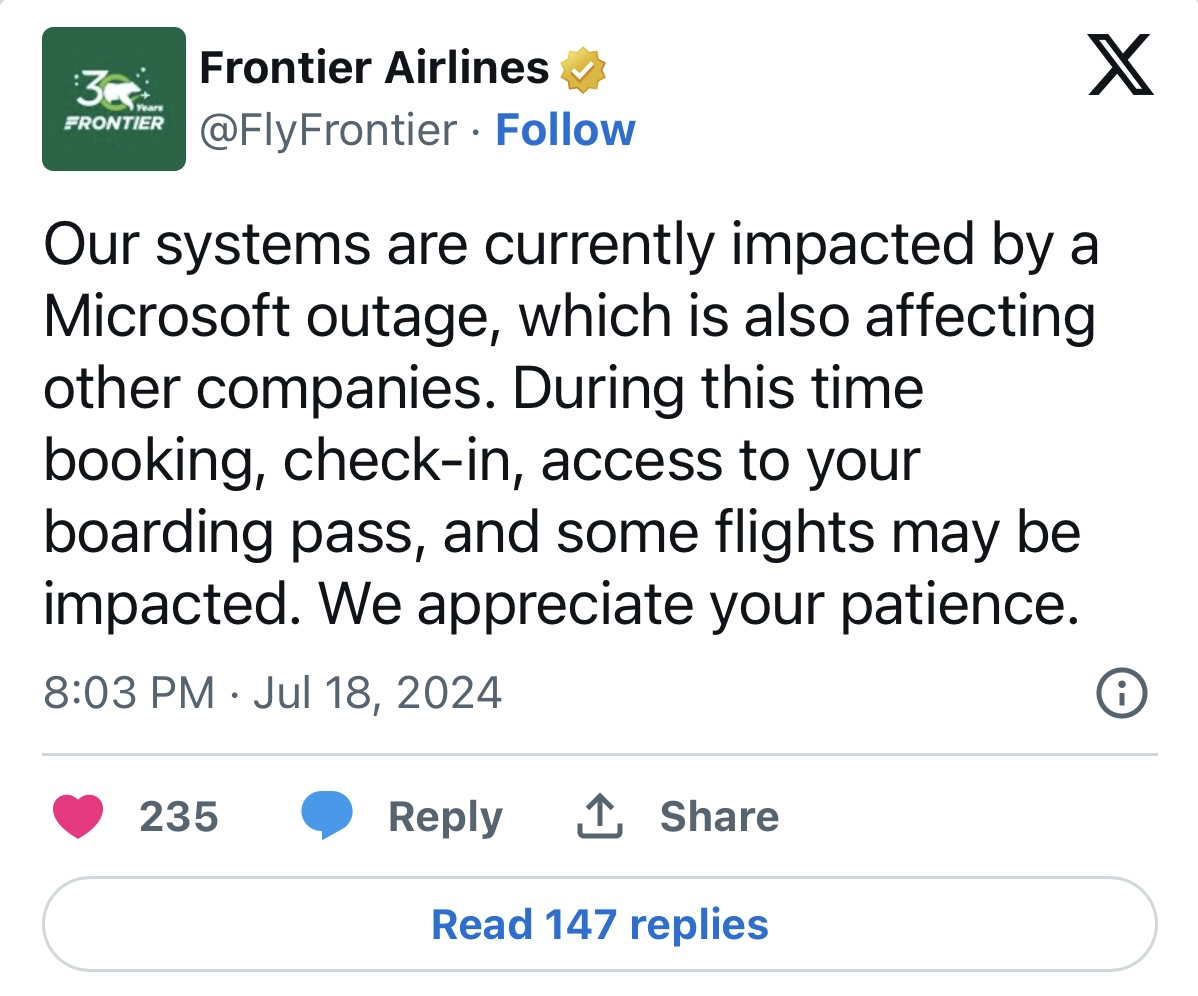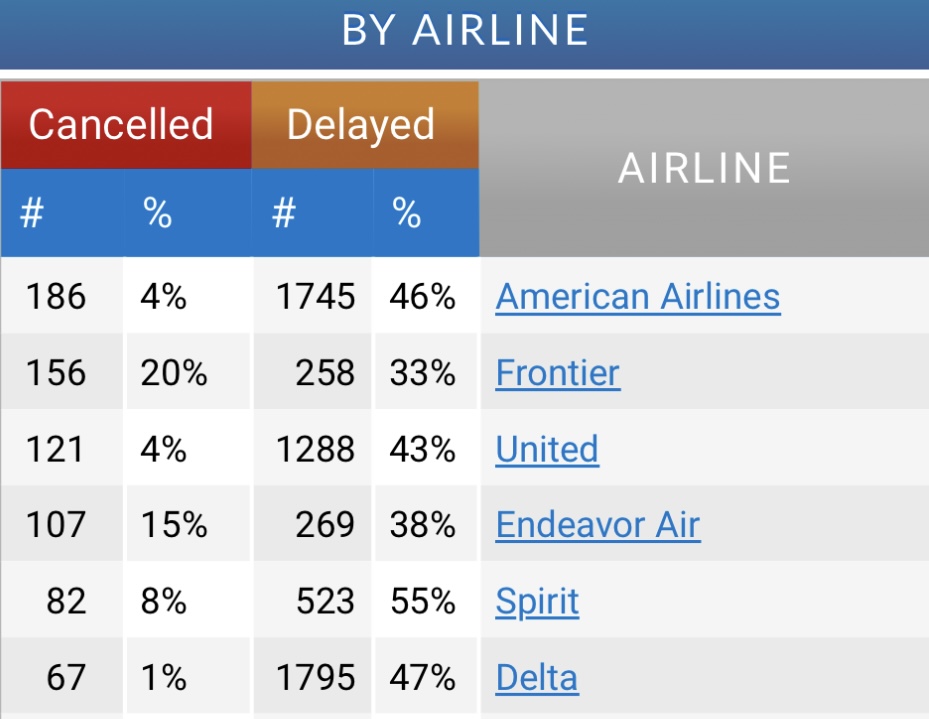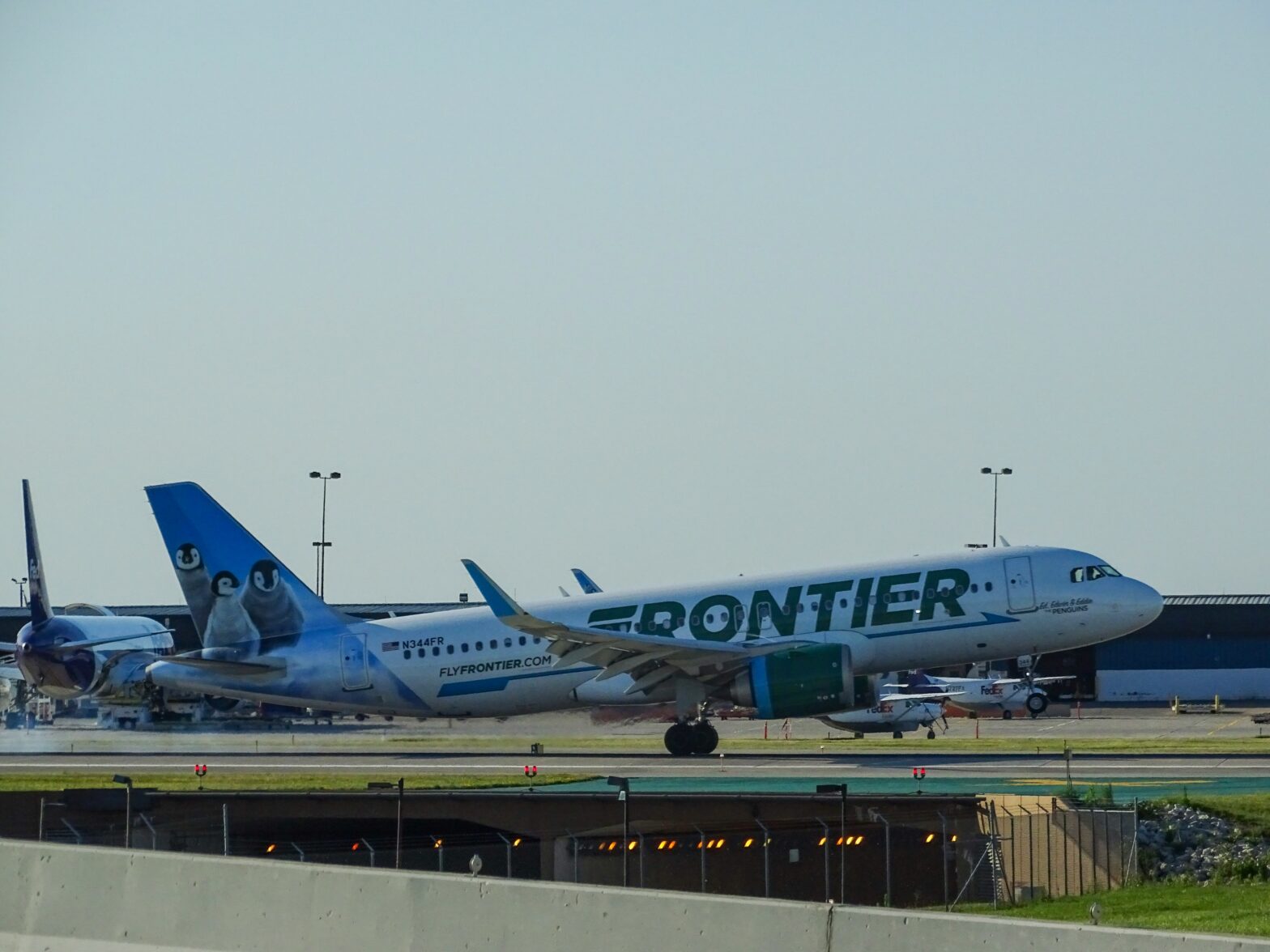On Thursday, a major tech issue impacted flights from multiple U.S. carriers, causing complications for thousands of air passengers worldwide due to a massive IT outage affecting various industries. Many travelers took to social media, complaining about problems with booking, boarding, flight delays, and more. Here’s what went down:
The Situation At Hand

Starting around 6 p.m. EST on Thursday, interruptions in flight operations affected many airlines. Frontier Airlines was one of the most impacted and the first to address the situation on social media. A major Microsoft technical outage caused the airline’s operational system to crash, disrupting global IT systems, grounding planes, and complicating matters for countless travelers. Booking, check-in, access to boarding passes, and flights were all affected, leading to frustration and anger among Frontier customers.
How Did the Microsoft Outage Happen?
The issue began with a flawed software update from CrowdStrike, a cybersecurity company. The update, intended to protect businesses from hackers, caused many computers running Microsoft Windows to crash almost immediately. This chaos spread globally as Microsoft and CrowdStrike support many major companies.
Microsoft’s Response
Microsoft acknowledged the issues in a system report posted on Thursday around 8 p.m. The company announced that their systems were up and running again by Friday, July 19, at 12:21 a.m. EST, having worked on the incident from 6:59 p.m. on Thursday.
Passengers’ Experience — A First-Hand Perspective
I experienced the outage right before a flight. Delays started between 5:30 p.m. and 6:30 p.m. EST, significantly affecting boarding as Frontier Airlines’ computer system for scanning tickets was down. Gate agents resorted to listing QR code identification numbers to continue boarding, which went relatively smoothly considering what was to come.
After an hour on the plane past the scheduled departure time, the pilot announced that the computer system was down. We waited patiently, given the storm that had just passed at Hartsfield-Jackson Atlanta International Airport (ATL). About 10 or 15 minutes later, the crew told us to deplane due to the worldwide outage impacting their systems.
An hour later, the announcement came that Microsoft had gone down. Around 9 p.m. EST, the flight, along with many others, was canceled. The airline’s downed systems prevented gate agents from assisting with rebooking and caused refund delays.
The Aftermath Of The Microsoft Outage

The outage resulted in significant flight delays and cancellations. Businesses and airlines are struggling to recover from the global Microsoft outage. Travelers can find insights on websites like FlightAware.com, which specify disproportionately impacted airlines. FlightAware’s Misery Map, an interactive visualization of U.S. flight delays and cancellations, helps flyers assess which regions and airports are most affected.
The outage impacted more than just the aviation industry; it also disrupted banks and even 911 systems. Major U.S. carriers cited communication issues that slowed down operations. The number of canceled flights is still climbing as airlines work to resolve thousands of operational issues, with systems not yet fully recovered. Understandably, the outage left customers confused and concerned, causing them to report missed weddings, funerals, and more. More details about the situation are still developing.





